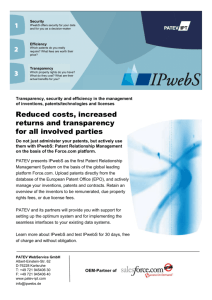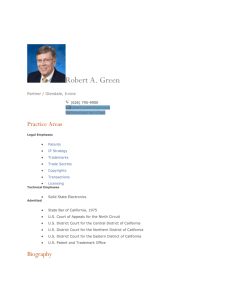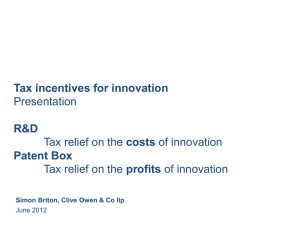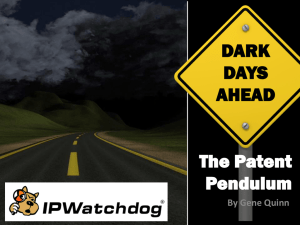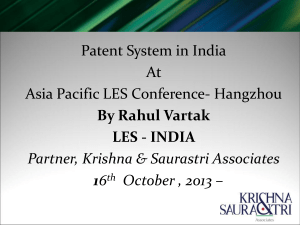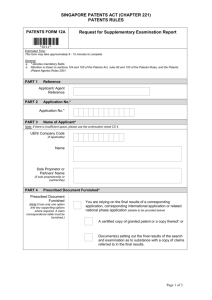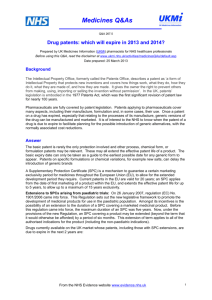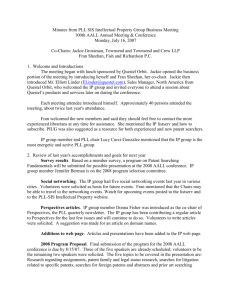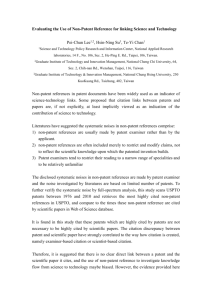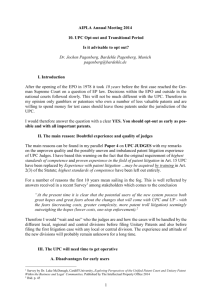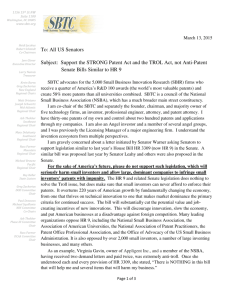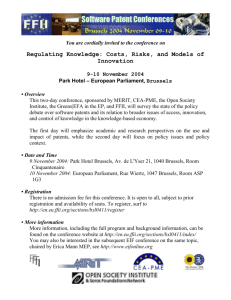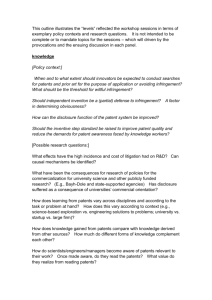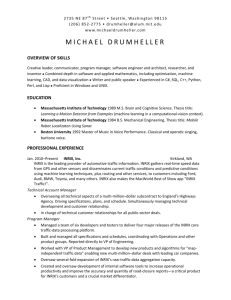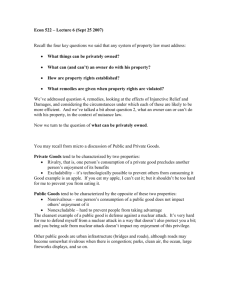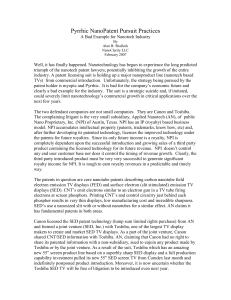The Case for Enhancing Patent Maintenance Fees in Relation to
advertisement
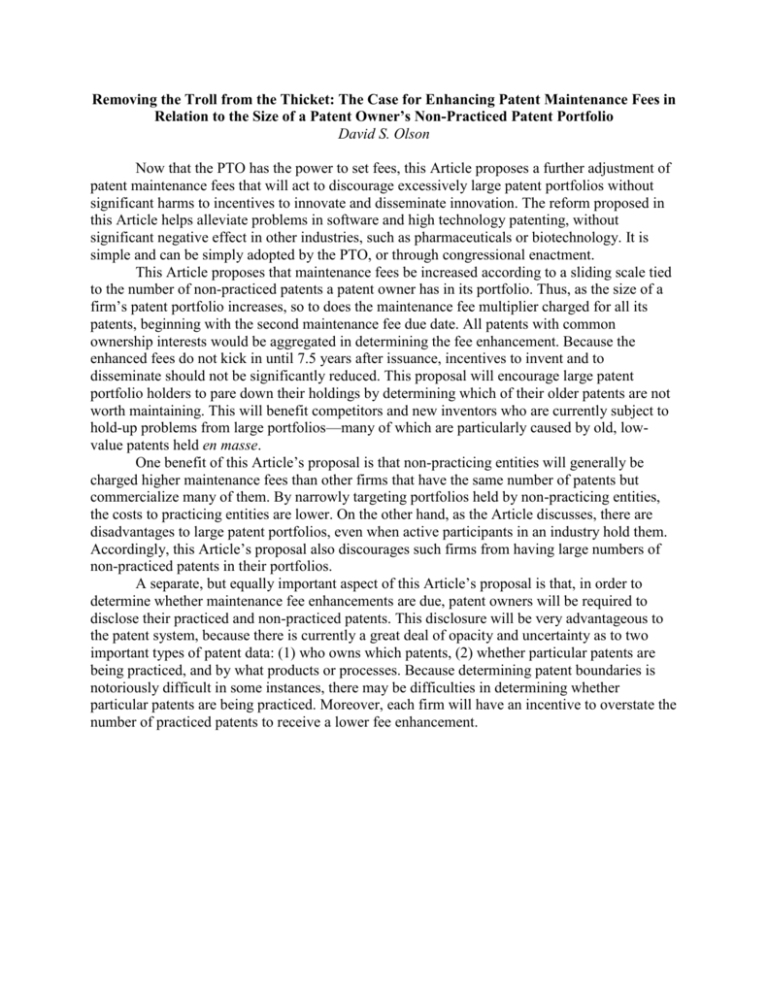
Removing the Troll from the Thicket: The Case for Enhancing Patent Maintenance Fees in Relation to the Size of a Patent Owner’s Non-Practiced Patent Portfolio David S. Olson Now that the PTO has the power to set fees, this Article proposes a further adjustment of patent maintenance fees that will act to discourage excessively large patent portfolios without significant harms to incentives to innovate and disseminate innovation. The reform proposed in this Article helps alleviate problems in software and high technology patenting, without significant negative effect in other industries, such as pharmaceuticals or biotechnology. It is simple and can be simply adopted by the PTO, or through congressional enactment. This Article proposes that maintenance fees be increased according to a sliding scale tied to the number of non-practiced patents a patent owner has in its portfolio. Thus, as the size of a firm’s patent portfolio increases, so to does the maintenance fee multiplier charged for all its patents, beginning with the second maintenance fee due date. All patents with common ownership interests would be aggregated in determining the fee enhancement. Because the enhanced fees do not kick in until 7.5 years after issuance, incentives to invent and to disseminate should not be significantly reduced. This proposal will encourage large patent portfolio holders to pare down their holdings by determining which of their older patents are not worth maintaining. This will benefit competitors and new inventors who are currently subject to hold-up problems from large portfolios—many of which are particularly caused by old, lowvalue patents held en masse. One benefit of this Article’s proposal is that non-practicing entities will generally be charged higher maintenance fees than other firms that have the same number of patents but commercialize many of them. By narrowly targeting portfolios held by non-practicing entities, the costs to practicing entities are lower. On the other hand, as the Article discusses, there are disadvantages to large patent portfolios, even when active participants in an industry hold them. Accordingly, this Article’s proposal also discourages such firms from having large numbers of non-practiced patents in their portfolios. A separate, but equally important aspect of this Article’s proposal is that, in order to determine whether maintenance fee enhancements are due, patent owners will be required to disclose their practiced and non-practiced patents. This disclosure will be very advantageous to the patent system, because there is currently a great deal of opacity and uncertainty as to two important types of patent data: (1) who owns which patents, (2) whether particular patents are being practiced, and by what products or processes. Because determining patent boundaries is notoriously difficult in some instances, there may be difficulties in determining whether particular patents are being practiced. Moreover, each firm will have an incentive to overstate the number of practiced patents to receive a lower fee enhancement.



